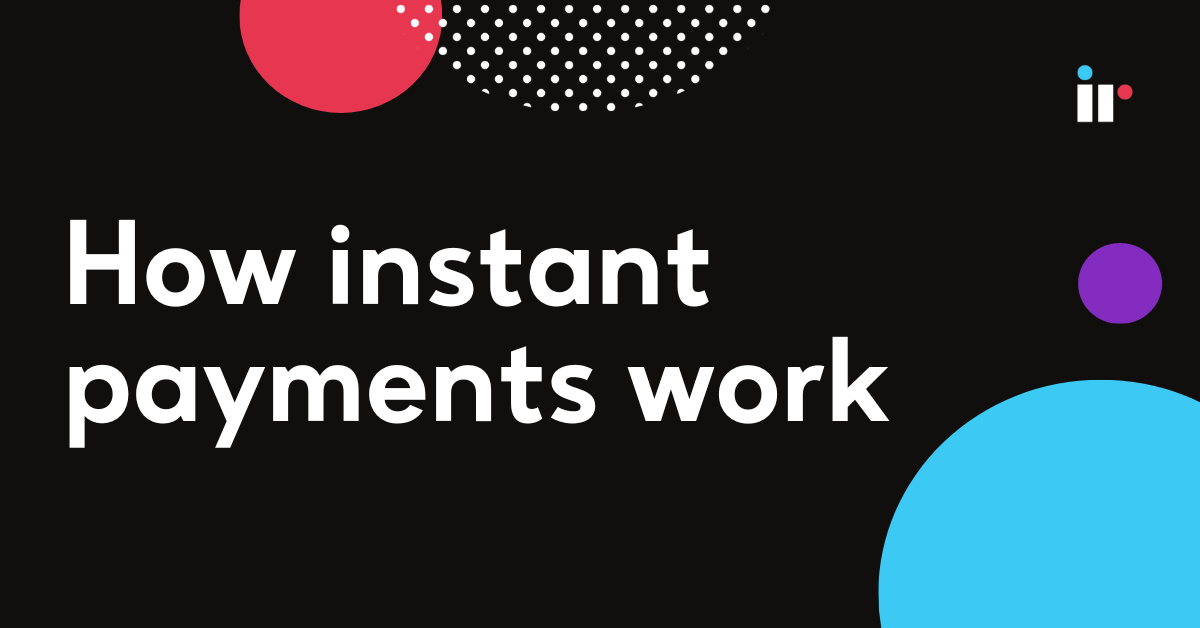Banks and financial institutions worldwide are embarking on a new era as they prepare to transition their payment systems. The change means switching from using SWIFT messages exchanges network (known as ISO 15022) to the newer, highly structured data-rich ISO 20022 financial messaging standard.
This transition represents a global shift in the payments industry and through better management of data, it promises significant long-term benefits for the economy.
This guide aims to help you understand what ISO 20022 is, how it impacts the payments industry, and how to successfully manage ISO 20022 migration and adoption with the help of real-time payments analytics and third-party monitoring solutions.
Watch to our webinar: How ISO 20022 will affect the payments industry
An introduction to ISO 20022
The urgent need for interoperability in the payments industry worldwide has paved the way for the introduction of ISO 20022, a global and open financial messaging standard created for banks and financial institutions by the International Organization for Standardization (ISO).
The global economy is becoming more interconnected, and along with it, the payments industry is now more complex. There is an increasing need for a truly universal language on which to model the payments message format throughout the entire industry. This common language is ISO 20022.
ISO 20022 is a flexible standard for payment messages that enables vastly improved interchange and communication between a financial institution, its customers and market infrastructures.
The adoption of ISO 20022 means users can create frictionless payments, and make their business more data-driven. With a better structure, and dedicated fields for complicated payment details, the ISO 20022 formatting standard enables improved communication efficiency for cross border payments, real time and high value payments.
Rather than managing multiple message standards that speak different languages, ISO 20022 offers a universal messaging language throughout the payments chain, on an international scale.
What does ISO 20022 mean for the payments industry?
With the industry migration of major currencies to ISO 20022 formatting, the SWIFT network estimates that 80% of global, high-value payments by volume and 90% by value, will be processed through ISO 20022.
In over 50 countries, ISO 20022 will replace existing domestic legacy systems and payment standards and reduce fragmented standards for cross border payments throughout banks and financial institutions, financial market infrastructures, machines and ecosystems.
The enriched data sets made possible by ISO 20022 will eventually abolish the need for manual intervention and promote end-to-end automation through the transaction life cycle for all market participants. This increase in machine-readability will mean greater interoperability between financial institutions and settlement networks across different regions.
The move to ISO 20022 by all major Real Time Gross Settlement (RTGS) and high value payments systems globally is one of the most far-reaching initiatives in the financial services industry.
Read our guide Real Time Gross Settlement for High Value Payments
ISO 20022 migration will facilitate improved straight through processing, greater openness, and improved visibility throughout Financial Messaging Information Systems (FMIS).
What are the benefits of ISO 20022?
ISO 20022 adoption will provide benefits and positive far reaching implications to the entire payments ecosystem, including financial institutions and market infrastructures, with a funnel-through to bank customers. The benefits of ISO 20022 migration are many, but there are two key areas that hold several other merits across all business processes.
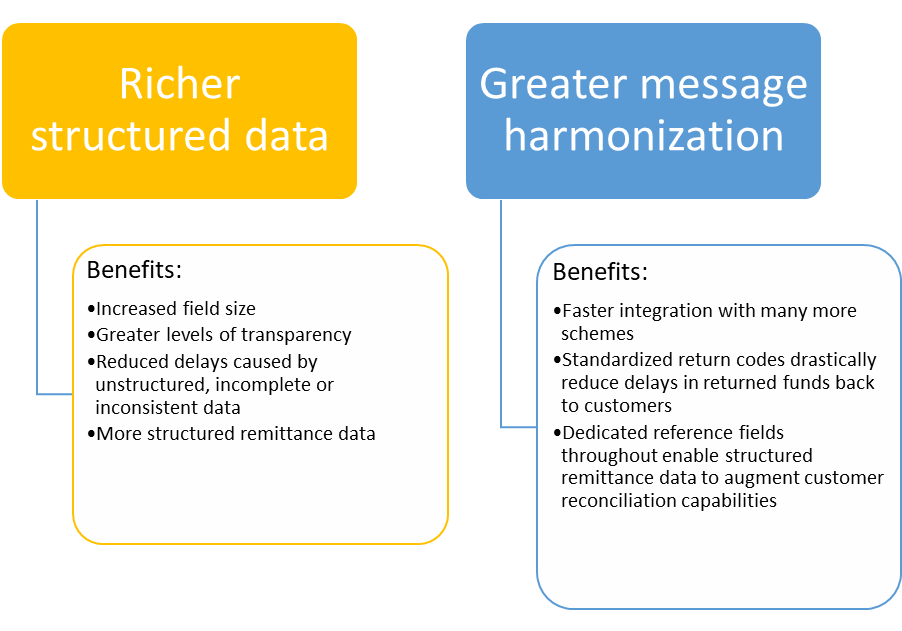
Greater efficiency
ISO 20022 provides richer structured data and increased field size mean more transparency, better security and a reduction of processing delays.
Improved straight through processing
Fewer declines and rejections, less exceptions and better reconciliation leads to reduced costs throughout the payments chain.
Better compliance and security
SWIFT estimates that some 10% of international payments are delayed on their processing journey due to false-positive compliance checks and wasted time investigating. This is often because of missing key information. ISO 20022 will enable speedier processing for sanctions screening, fraud and financial crime mitigation
More efficient returned funds
Specific returns and investigation messages using standardized return codes, means a huge reduction to delays in returning funds to customers, and more prompt response to inquiries from corresponding banks.
The importance of quality data
ISO 20022 provides end-to-end richer data, which is superior in accuracy, structure and meaning. This improved quality of data means means a more efficient payments experience for banking customers.
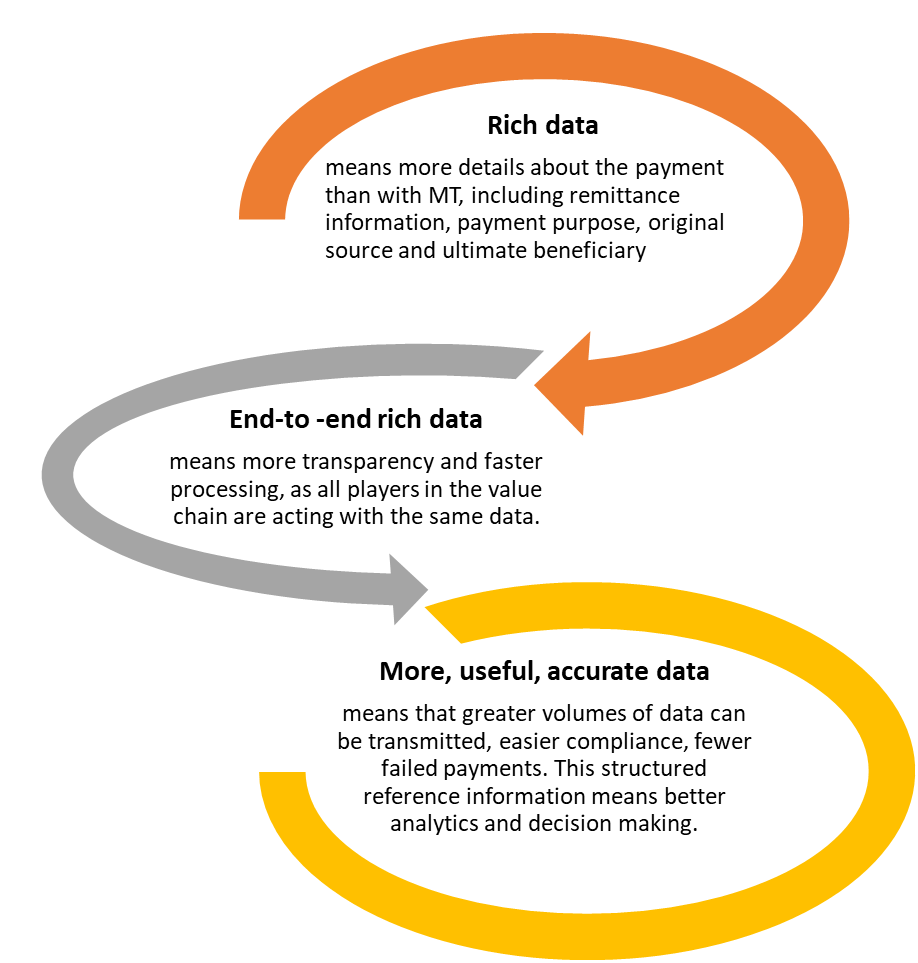
A better data model
The ISO 20022 data standard is based on a descriptive and easy-to-understand XML format that allows for far more information go be transmitted than the SWIFT MT format. ISO 20022 captures more data, and its hierarchical structure logically groups data.
For example, in the ISO 20022 message type, the creditor field contains name and address, with additional structured provision for street name and Zip Code in the address field. This directly supports straight through processing of data, enabling more meaningful analysis and potentially creating a more efficient operating model.
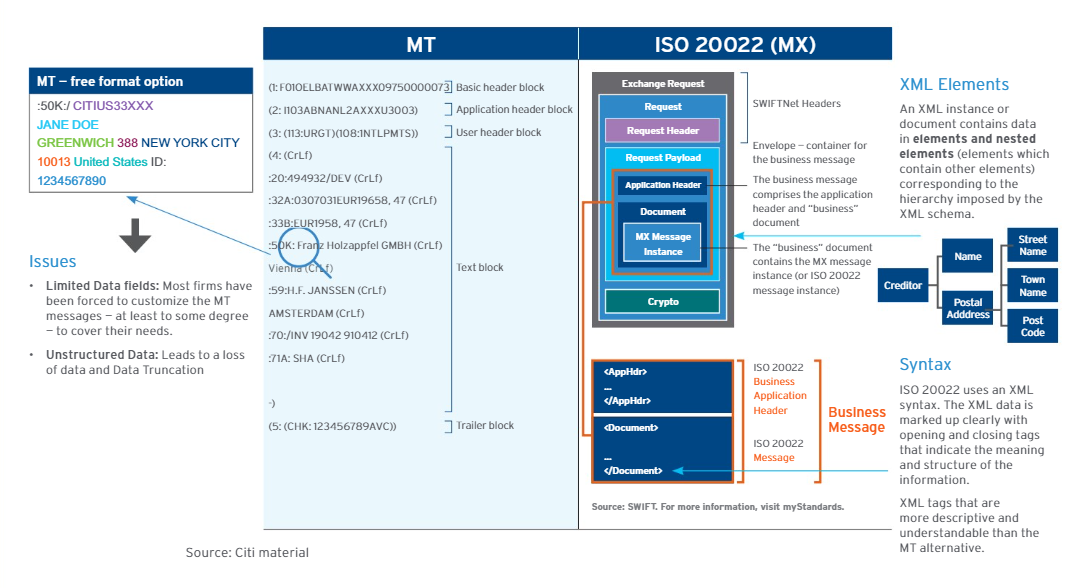
Image source: Citibank
ISO 20022 migration timelines
ISO 20022 has already been adopted in 70 countries to replace domestic or legacy formats, but worldwide ISO 20022 adoption will take place over the next few years. The Payment Market Infrastructures (PMIs) of the world's major currencies have either undergone ISO 20022 migration, or are in the process of adopting ISO 20022 by November 2025.
SWIFT has published a roadmap to migrate the existing message type 1,2,& 9 series starting from March 2023, with an end to the coexistence period in November 2025.
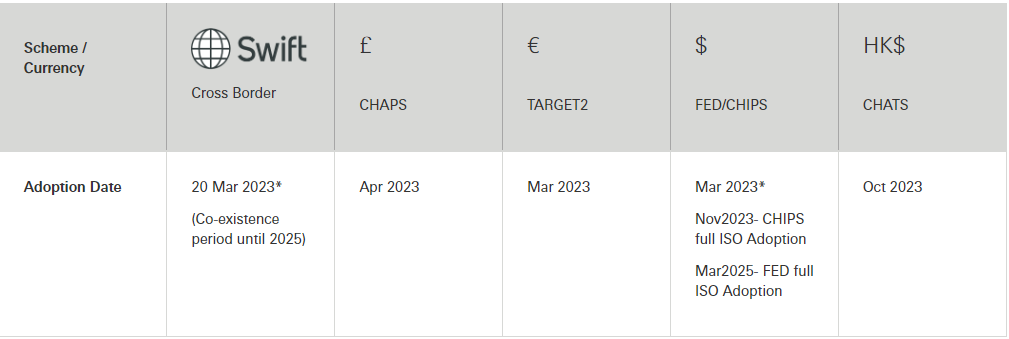
"Following the European Central Bank decision (published on 20 October 2022) to delay the ISO 20022 migration of the Eurosystem to 20 March 2023, when it will begin the coexistence period for all users. Swift announced (on 27 October 2022) that they too are delaying the start of the ISO 20022 migration to March 2023 , You can read the full statement on Swift’s website."
Challenges of the ISO 20022 migration
With less than a year before cross-border payments transition to the ISO 20022 international standard, many banks, financial institutions and payments providers globally are now facing the complexity of ISO 20022 and the challenges of adopting a new industry standard.
Translating legacy tech to ISO 20022
Due to the complexity of ISO 20022, a new translation system will need to be part of the migration plans implemented by payments providers using legacy technology, as to the rules for Anti Money Laundering, compliance checks and fraud.
Upgrading aging legacy systems
One of the key challenges to adopting a common language, and moving away from an MT format legacy system is the lack of support for the ISO 20022 format.
While legacy systems need to be updated or replaced, upgrading multiple interconnected can involve a substantial budget, which needs to be agreed on with all stakeholders.
Following the right timeline
Cross border payments businesses need to put careful thought into planning their migration strategy, with the different deadlines for ISO 20022 adoption.
Implementing new data management strategies
The length of ISO 20022 messages can increase up to hundreds of times compared to the MT format messaging standard. Apart from the worry of data loss, there can be multiple repetitive sections that mean a huge increase in the amount of data, and handling this enriched data demands redefining data management infrastructure.
Every character within a message has to be 100% aligned with the specifications. The format is validated at several steps along the communication channel chain on the sending and receiving sides. Even a single missing colon could result in a multi-million transfer being rejected or delayed for days.
How IR can help
Staying on top of emerging technologies and regulatory changes while keeping track of the introduction of a new standard is challenging. With the ISO 20022 migration wheels set in motion, it's more important than ever to turn data into intelligence.
Real-time payments analytics are vital to measure, view growth and make decisions all the way through the payments chain, and across each different platform. This is even more important now with the impending global ISO 20022 migration.
Capturing, monitoring, managing and analyzing your data IR Transact will simplify the complexity of managing payment ecosystems. IR Transact is non-intrusive, and integrates seamlessly into any existing enterprise environment, bringing real-time visibility to the entire payments environment.
It collects data from all silos across the payments system. It filters, correlates and analyzes this information and brings it into a single application, providing valuable, actionable insights.
Among the many other benefits of monitoring and data management, improved analytics means less manual intervention as well as more accurate and efficient compliance processes.
Find out more about how IR Transact can help as you migrate to ISO 20022.




